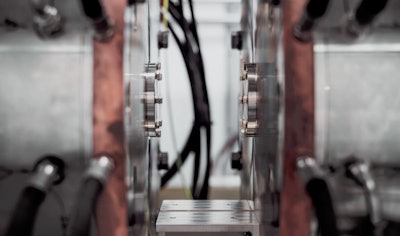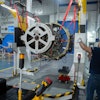
 Becky Cater, Global Product Manager, Proto Labs
Becky Cater, Global Product Manager, Proto LabsIn a perfect world, design engineers would get part designs right the first time, every time.
If only it were that easy. The reality is that design is an iterative process, often requiring multiple changes and many repetitive physical and digital steps before landing on the right design. And all of this work and rework can add significant time and cost to a development cycle.
Fortunately, the digitization of product design and manufacturing has enabled software-based technologies that help product engineers shorten development time while reducing design risks. One of those technologies is a design for manufacturability (DFM) analysis tool.
DFM analysis provides critical feedback during the design stage to help engineers save time, money and risk prior to physically manufacturing the part.
How It Works
A DFM analysis tool can be utilized across production processes – 3D printing, CNC machining or injection molding. Depending on the process, the tool looks for different attributes in the 3D CAD file.
 (Image credit: Proto Labs)
(Image credit: Proto Labs)The process begins by uploading a CAD file to the DFM analysis tool, which is usually hosted by a digital manufacturing partner, like Proto Labs. Within a few hours, sometimes even instantly, product developers receive interactive design analysis along with a manufacturing quote.
This analysis includes a digital prototype of the part that the engineer can then manipulate to review key manufacturing parameters that are relevant to DFM, such as wall thickness, material flow, design complexity and more.
Even better, the design analysis can provide either required or recommended changes to a part’s geometry to help meet manufacturing requirements or to simply improve its manufacturability. Some of the areas that a DFM tool can evaluate or provide design changes to include:
Draft: Draft is a critical design aspect that helps facilitate a part’s removal from a mold. Parts should have a minimum 0.5-degree draft (but ideally a 2-degree to 3-degree draft) on each vertical face. A DFM analysis tool can identify where a part has zero draft, which could result in issues such as drag marks, ejection-stress distortion and more. This capability can be especially beneficial for designers who have limited familiarity with injection-molded parts and, as a result, risk overlooking draft in their designs.
Thinness and Thickness: Thin part sections can result in fill problems, weak weld lines and texture variations. On the other hand, thick part sections can lead to sink marks, voids and excessive shrink. A DFM analysis tool can help ensure part sections meet the recommended thickness for specific resin types, while also helping designers maintain a consistent wall thickness across a part.
Undercut: An undercut creates an interlock between a part and one or both mold halves. This can prevent the part from being ejected or the mold from opening. A DFM analysis tool can identify undercuts in a part design, thus helping prevent these issues from not being discovered until production has started.
Radius: Sharp corners on an injection-molded part can create stress and weaken the part’s structural integrity. As a result, it’s important that both inside and outside corners on a part design be radiused, or rounded. A DFM tool can help designers track radiused corners in their part designs and ensure they meet specific measurements.
Beyond addressing these and other design issues, a DFM tool can provide pricing feedback as part of the design analysis.
 (Image credit: Samuel Zeller)
(Image credit: Samuel Zeller)And that pricing can update in real time to reflect modifications, such as different materials or surface finishes. This can help designers better understand not only their manufacturing costs but also the financial impact of different design choices.
Part of a Digital Ecosystem
DFM has an especially important role in today’s changing manufacturing landscape.
Traditional manufacturing systems, in which software operates in isolated silos and workers often rely on incomplete information, are no longer sufficient.
They’re being replaced with a digital-manufacturing ecosystem, in which all aspects of the manufacturing process – including 3D CAD modeling and visualization tools, manufacturing software, and data-collection systems on the plant floor – can be seamlessly connected on a single digital thread.
By weaving DFM into this digital thread, designers can evaluate the manufacturing feasibility of a new part before a machine even receives tooling instructions.
This kind of accelerated development can help meet growing demands to manufacture smaller batches of parts on-demand, while reducing inventory and materials waste. More importantly, however, it can help shave days or even weeks off the development cycle – saving millions in product development costs.






















